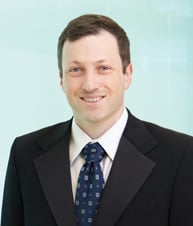A weekly summary of the precedential patent-related opinions issued by the Court of Appeals for the Federal Circuit and the opinions designated precedential or informative by the Patent Trial and Appeal Board.
Proppant Express Investments, LLC, et al. v. Oren Technologies, LLC, No. IPR2018-00914 (PTAB POP Mar. 13, 2019). Opinion by Boalick, joined by Iancu and Hirshfeld.
The Patent Trial and Appeal Board’s Precedential Opinion Panel (POP) ruled that parties challenging a patent via inter partes review can join their own petitions to add new issues, at the discretion of the Board.
In IPR2017-02103 (the 2103 IPR), Petitioner requested an IPR of claims 1–7, 10, and 12–19 of U.S. Patent No. 9,511,929. The Board instituted the 2103 IPR, but not on the ground challenging claim 4 because Petitioner had failed to account for all of the claim limitations. Petitioner then filed a new petition directed only to claim 4, and filed a motion requesting that it be joined to the 2103 IPR. The Board denied the new petition, after which the POP ordered rehearing to address three issues: whether 35 U.S.C. § 315(c) permits a petitioner to join a proceeding in which it is already a party; whether § 315(c) permits joinder of new issues into the existing proceeding; and whether a time bar under § 315(b), or any other relevant facts, impact the first two questions.
The POP concluded as to the first two issues that § 315(c) “provides discretion to allow a petitioner to be joined to a proceeding in which it is already a party and provides discretion to allow joinder of new issues into an existing proceeding.” The POP further concluded that the existence of a time bar under § 315(b) “is one of several factors that may be considered when exercising our discretion under § 315(c).” The POP explained, however, that “the Board will exercise this discretion only in limited circumstances—namely, where fairness requires it and to avoid undue prejudice to a party.” On the facts presented in this case, these standards were not met, and thus the POP denied the new petition and motion for joinder.
https://www.uspto.gov/sites/default/files/documents/Proppant_IPR2018-00914%20POP%20final%20edit.pdf
Forest Laboratories, LLC, et al. v. Sigmapharm Laboratories, LLC, et al., Nos. 2017-2369, -2370, -2372, -2373, -2374, -2375, -2376, -2389, -2412, -2436, -2438, -2440, -2441 (Fed. Cir. (D. Del.) Mar. 14, 2019). Opinion by Moore, joined by Prost and Dyk.
Claim 4 of U.S. Patent No. 5,763,476 recites a method of treatment comprising administering “sublingually or buccally” an effective amount of a pharmaceutical composition called asenapine. Claim 1, in contrast, is directed to the composition without expressly reciting sublingual or buccal formulations. The district court nonetheless construed Claim 1 to be limited to sublingual and buccal formulations. The Federal Circuit affirmed, ruling that the patent specification described the invention itself as relating to sublingual or buccal pharmaceutical formulations, and other portions, including the patent’s title, supported that view.
The Federal Circuit also addressed the district court’s construction of Claim 4 not to cover the treatment of bipolar disorders. The district court viewed the claim term “excitation” as being limited to “excitation disorders.” The Federal Circuit disagreed, ruling that “excitation” refers to a symptom. The court thus vacated the district court’s associated noninfringement finding and remanded for findings under the proper claim construction.
Turning to validity, the district court concluded after a bench trial that Claims 1 and 4 would not have been obvious. The district court found that there was no motivation in the art to develop sublingual or buccal formulations of asenapine, and found evidence of unexpected results and satisfaction of a long-felt need. Addressing these issues, the Federal Circuit vacated and remanded for the district court to determine whether certain compliance concerns would have provided a motivation to combine. Additionally, the Federal Circuit upheld the district court’s analysis of unexpected results, but overturned its analysis of a long-felt need.
http://www.cafc.uscourts.gov/sites/default/files/opinions-orders/17-2369.Opinion.3-14-2019.pdf
Natural Alternatives International, Inc. v. Creative Compounds, LLC, et al., No. 2018-1295 (Fed. Cir. (S.D. Cal.) Mar. 15, 2019). Opinion by Moore, joined by Wallach. Opinion concurring-in-part and dissenting-in-part by Reyna.
The Federal Circuit reversed and remanded a district court’s judgment on the pleadings that certain Method Claims, Product Claims, and Manufacturing Claims are not patent eligible under 35 U.S.C. § 101 and the Supreme Court’s two-part Alice test. The Federal Circuit explained that, “We live in the natural world, and all inventions are constrained by the laws of nature. As the Supreme Court has warned, we must be careful not to overly abstract claims when performing the Alice analysis.”
The patents at issue relate to the use of beta-alanine in a dietary supplement to increase the anaerobic working capacity of muscle and other tissue. Addressing the Method Claims, the Federal Circuit determined that they “are treatment claims and as such they are patent eligible.” The fact that the Method Claims utilize an underlying natural law “is not sufficient to establish that they are directed to that law.” The Method Claims require “specific steps be taken in order to bring about a change in a subject, altering the subject’s natural state.” Thus, they go beyond merely stating a law of nature, and instead set forth a particular method of treatment. The Federal Circuit conducted a similar analysis for the Product Claims and Manufacturing Claims, determining that they employ a natural law, but have different characteristics and can be used in a manner that natural beta-alanine cannot. The court therefore reversed and remanded.
Judge Reyna concurred in part and dissented in part. He disagreed with the majority’s “broad stroke of eligibility, primarily because … the majority’s § 101 analysis relies on an erroneous claim construction.” Judge Reyna agreed, however, that remand was warranted, which he “expect[s] permits the district court to revisit the § 101 question under a proper claim construction.”
http://www.cafc.uscourts.gov/sites/default/files/opinions-orders/18-1295.Opinion.3-15-2019.pdf

